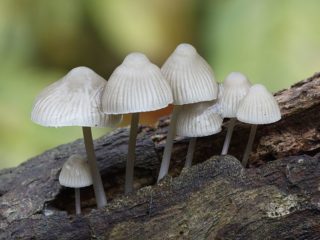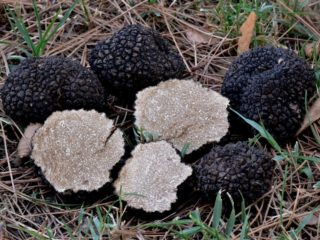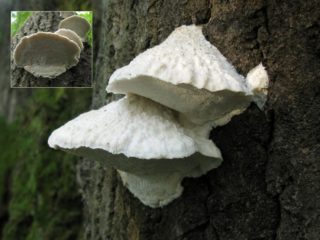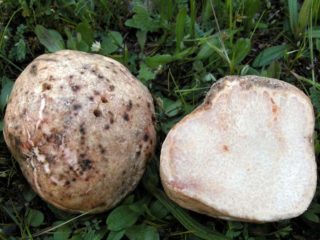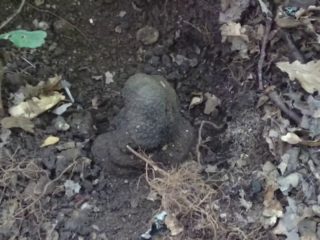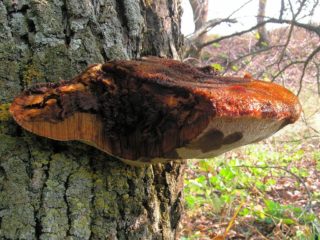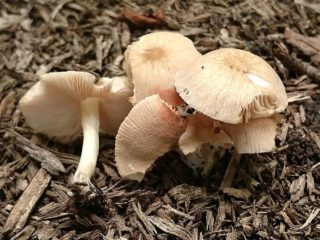Content
Tyromyces snow-white is an annual saprophyte mushroom, which belongs to the Polyporovye family. It grows singly or in several copies, which eventually grow together. In official sources, it can be found as Tyromyces chioneus. Other names:
- Boletus candidus;
- Polyporus albellus;
- Ungularia chionea.
What does Tyromyces snow-white look like?
Tyromyces snow-white is distinguished by an unusual structure of the fruiting body, since it consists only of a convex sessile cap of a triangular section. Its size reaches 12 cm in width and does not exceed 8 cm in thickness. The edge is sharp, slightly wavy.
In young specimens, the surface is velvety, but as the fungus matures, it becomes completely naked, and in overripe Tyromyceses, you can see wrinkled skin. The fruiting body at the initial stage of growth has a whitish tint, later it turns yellow and acquires a brown tint. In addition, clear black dots appear on the surface over time.
On the cut, the flesh is white, fleshy watery. When dry, it becomes dense fibrous, with little physical impact it begins to crumble. In addition, dry snow-white tyromyceus has an unpleasant sweet-sour smell, which is absent in fresh form.
The hymenophore of the snow-white tyromyceus is tubular. The pores are thin-walled, they can be rounded or angularly elongated. Initially, their color is snow-white, but when ripe they become yellowish-beige. Spores are smooth, cylindrical. Their size is 4-5 x 1.5-2 microns.
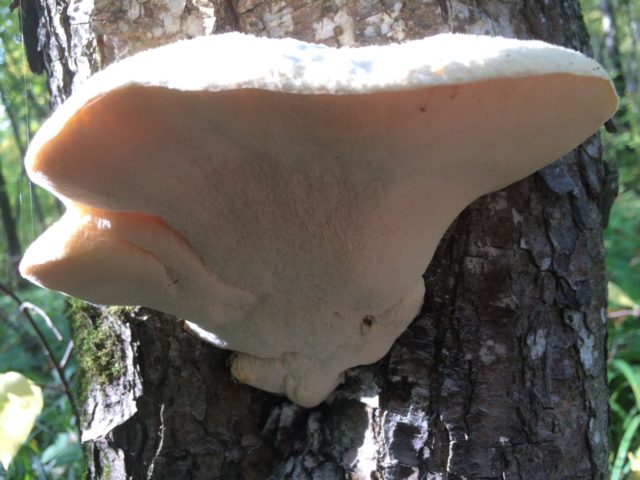
Tyromyces snow-white contributes to the development of white rot
Where and how it grows
The fruiting period of snow-white tyromyceus begins at the end of summer and lasts until late autumn. This fungus can be found on dead wood of deciduous trees, mainly on dry wood. Most often it is found on birch trunks, less often on pine and fir.
Tyromyces snow-white is widespread in the boreal zone of Europe, Asia, and also North America. In Russia, it is found from the west of the European part to the Far East.
Is the mushroom edible or not
White Tyromyces is considered inedible. It is strictly forbidden to eat it, both fresh and processed.
Doubles and their differences
By its external features, snow-white tyromyces can be confused with other mushrooms. Therefore, in order to be able to distinguish twins, you need to know their characteristic features.
The post is knitting. This twin is a member of the Fomitopsis family and is found everywhere. Its peculiarity is that young specimens are able to secrete drops of liquid, giving the impression that the mushroom is "crying". The twin is also an annual, but its fruit body is much larger and can reach 20 cm in diameter. The color of the post astringent is milky white. The pulp is juicy, fleshy, and tastes bitter. The mushroom is considered inedible. The fruiting period begins in July and lasts until the end of October.The official name is Postia stiptica.
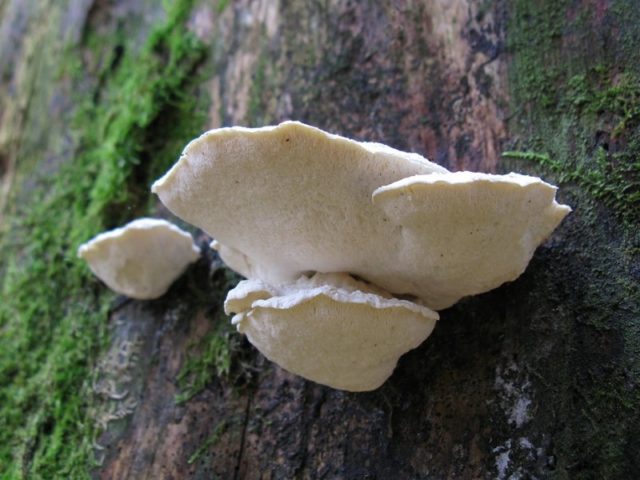
Postia astringent grows mainly on the trunks of coniferous trees
Fissile aurantiporus. This twin is a close relative of snow-white tyromyceus and also belongs to the Polyporovye family. The fruit body is large, its width can be 20 cm. The mushroom has an outstretched shape in the form of a hoof. Its color is white with a pink tint. This species is considered inedible. The splitting aurantiporus grows on deciduous trees, mainly birches and aspens, and sometimes on apple trees. The official name is Aurantiporus fissilis.
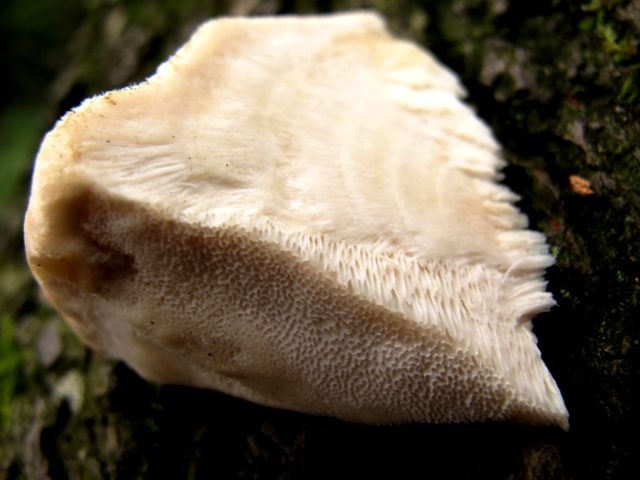
Aurantiporus splitting has a very juicy white flesh
Conclusion
Snow-white Tyromyces belongs to the category of woody inedible mushrooms, so it is not popular among lovers of quiet hunting. But for mycologists it is of interest, since its properties have not been fully studied. Therefore, research continues on the medicinal properties of the mushroom.

